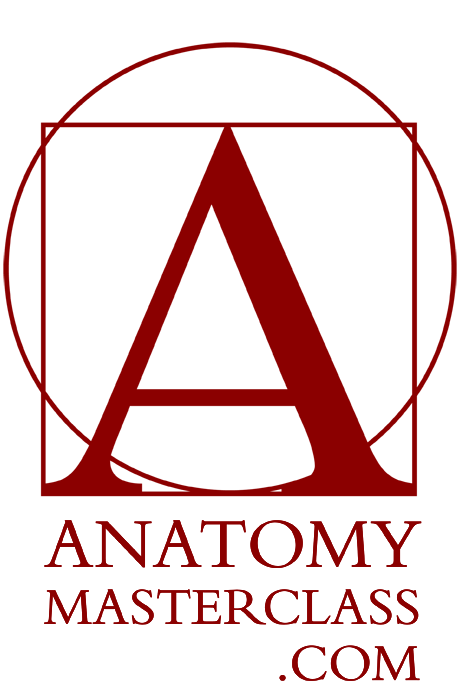Leonardo da Vinci on Portrait Drawing
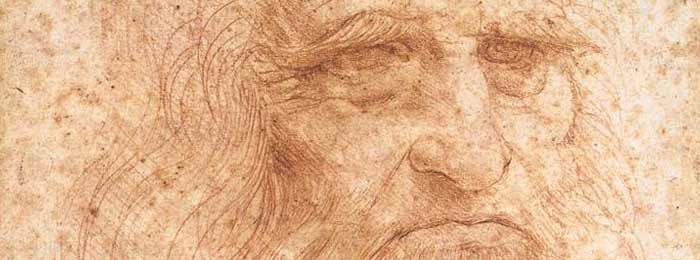
Leonardo da Vinci Self Portrait and his writing on portrait drawing
Article by Juhi Kulkarni
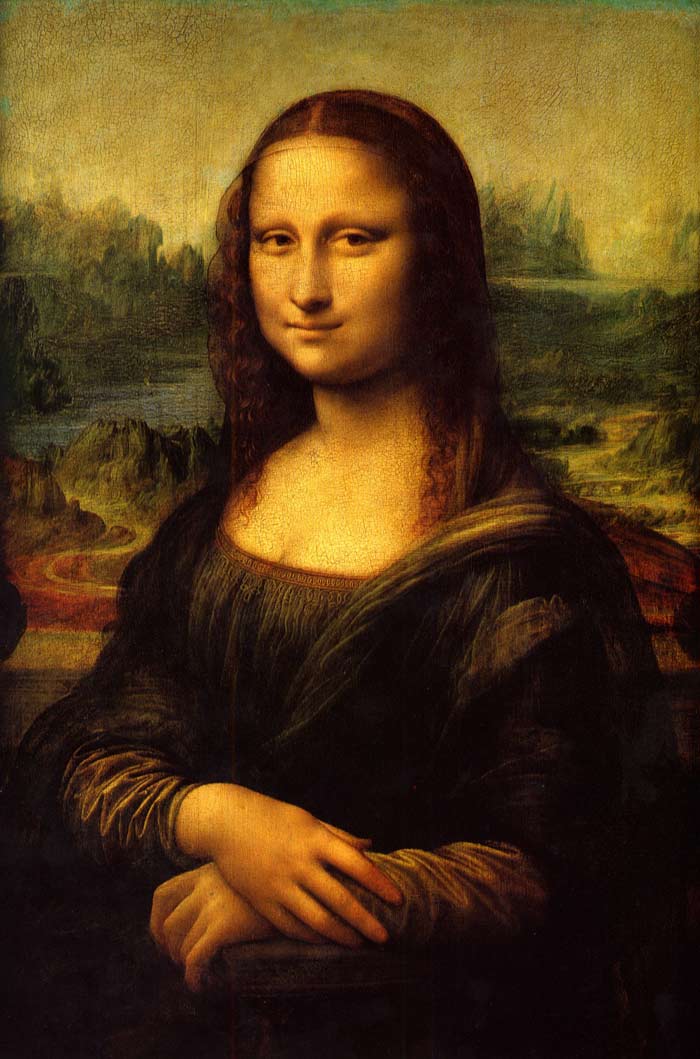
The most well known works of art happens to be Mona Lisa, making Leonardo Da Vinci one of the greatest portrait artist of the Renaissance art. There are innumerable accounts where his works have been written and speculated about. They have been always awed and marvelled by generations and despite being five centuries old. But as compared to, very little is known about his life and the artist himself, perhaps because of his reclusive and secretive life. Out of the thousands of drawings he created about human anatomy, animals, nature and war machines we find one that is speculated as his self portrait.
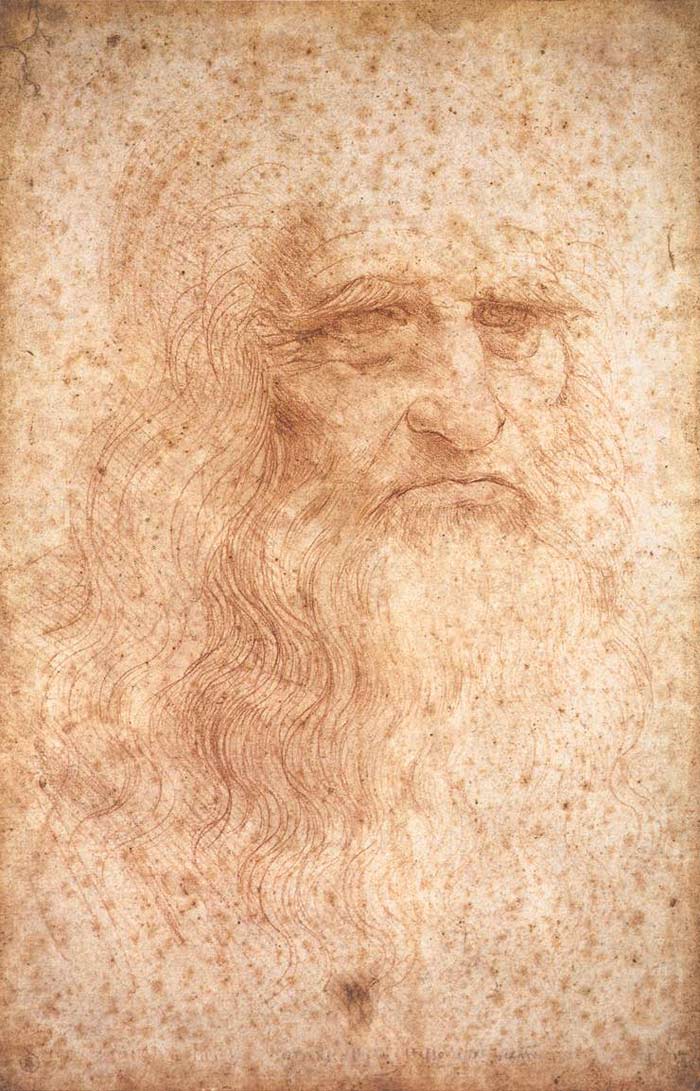
Leonardo drew this self portrait in red chalk on paper in 1512, when he was about 60 years old and living in France. The original drawing measures 33.3 x 21.3 cm (13 1/8 x 8 3/8 in) and now is a part of the magnificent collection of the Biblioteca Reale, Turin. In it we can see the head of an elderly man in three-quarter view, slightly turned towards the viewer’s right. Leonardo distinguishes himself by his long hair and waving beard which overflows over his shoulders and chest. The length of the hair and beard is uncommon in Renaissance portraits and suggests, a person of maturity. His face has an aquiline nose and is marked by the deep lines on the brow and baggy pouches below the eyes. It appears as if he has has lost his upper front teeth, causing deepening of the grooves from the nostrils to his upper lips. His deep solemn eyes do not engage the viewer but gaze ahead, shielded by the long eyebrows, give a sense of solemnity and a somber feel to the entire drawing.
It has been drawn in fine lines, shadowed by hatching, cross hatching and executed with the left hand, as was Leonardo’s habit. The paper has brownish “fox marks” caused by the accumulation of iron salts due to moisture. “Researchers have developed a nondestructive way to gauge the condition of the drawing by quantifying the chromophores in the paper, the culprit behind its yellowing. Their technique, described in Applied Physics Letters (2014), will be used to assess the rate at which the image is degrading and to estimate its life expectancy.”
It has often been said that in this portrait Leonardo looks older than his age, he can have been only about fifty when he made this drawing, because of which many have doubted whether it is a likeness of himself. Other good reasons however is, this portrait perfectly fits the role in which Leonardo would have liked to cast himself. A venerable old man with a long white beard, the severe eyes shaded under bushy brows, was the traditional type for representing philosophers, prophets and also God. We must remember his claim that the painter contends with nature and that painting is related to God, this imposing sage.
The assumption that the drawing is a self-portrait of Leonardo was made in the 19th century, based on the similarity of the sitter to the portrait of Leonardo in Raphael’s The School of Athens and on the high quality of the drawing, consistent with others by Leonardo. It was also decreed to be a self-portrait based on its likeness to the frontispiece portrait of Leonardo in Vasari’s Second Edition of The Lives of the Artists. Frank Zöllner states: “This red chalk drawing has largely determined our idea of Leonardo’s appearance for it was long taken to be his only authentic self-portrait. However, the identification of the drawing as a self-portrait is not universally accepted. This claim that it represents Leonardo has been criticized by a number of Leonardo scholars and experts, such as Carlo Pedretti, Robert Payne, Professor Martin Kemp, Larry J. Feinberg, Professor Pietro Marani, and Ernst Gombrich.
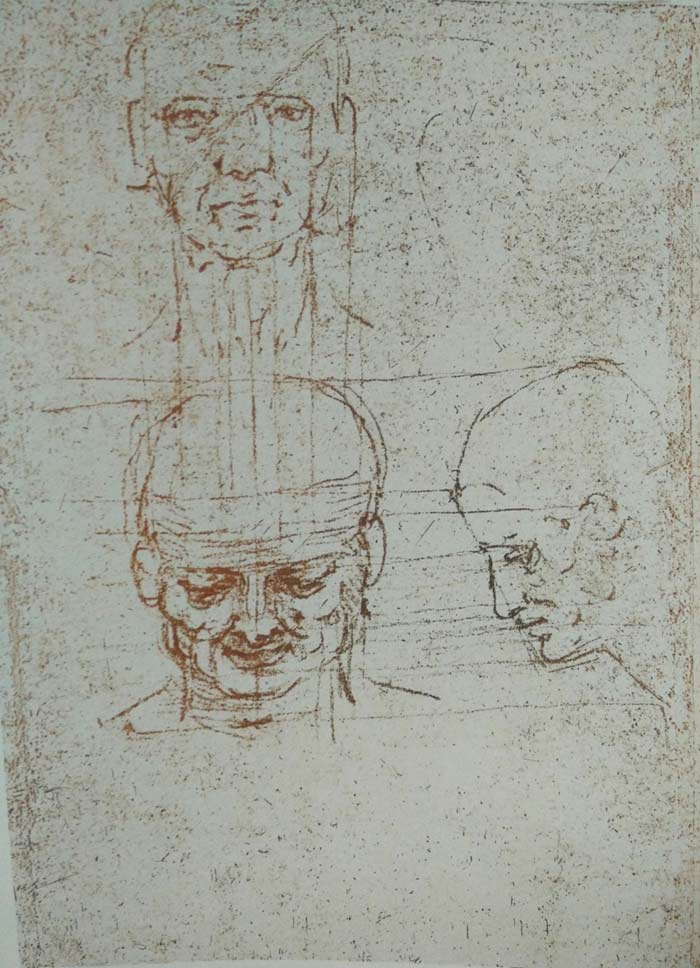
Referring to his notes and drawings about portrait drawing we can get a better understanding of how to use proportions to draw portraits.
“To draw a head in which the features and agree with the turn and bend of the head, pursue this method. You know that the eyes, eyebrows, nostrils, corners of the mouth, and sides of the chin, the jaws, cheeks, ears and all the parts of the face are squarely and straight set up on the face.
Therefore when you have sketched the face draw lines passing from one corner of the eye to the other; and so forth the placing of each feature; and after having drawn the ends of the lines beyond the two sides of the face, look if the space inside the small parallel lines on the right and on the left are equal, but be sure to remember to make these lines to the point of sight. If you want to acquire facility for bearing in mind the expression of a face first make yourself familiar with a variety of forms, several heads, eyes, nose, mouth, chins and cheeks and neck and shoulders and put to a case. Noses are of 10 types straight, bulbous, hollow, prominent, above or below the middle, aquitaine, regular, flat, round, or pointed. These hold good as to profile. In full face there are of 11 types. These are equal, take in the middle, train in the middle, with the tip thick, and at the root narrow or narrow at the tip and wide at the root full stop with nostrils wide or narrow high or low and the opening wide or hidden by the point. And you will find an equal variety in the other details, which things you must draw from nature and fix them in your mind, or else when you have to draw a face by heart carry with you a little book in which you have noted such features and when you have cast a glance at the face of a person you wish to draw you can look, in private which nose or mouth is most alike or there make a little mark to recognise it again at home.”
Leonardo here gives us a great tip to remember how to draw faces as well as proportions which we can use for portrait drawings. Also here we can see emphasis on life drawing as well as sketching and studying subjects daily.

More detailed proportions of the face can be found written by Leonardo, under the heading of beauty, reason and art. Here we find intricate measurements of the face in proportion to the distances between the elements of the face and sometimes different distances between other parts of the body.
“a n o f equal to the mouth. “a c” and “a f” are equal to the space between one eye and the other.
The distance from the attachment of one ear to the other ear is equal to that from the meeting of eyebrows, to the chin and then find the width of the amount is equal to the length of the parting of the lips to the bottom of the chin.
“n m o p r q” are equal to half the width of the eye that is from the inner corner of the eye to its outer corner and in like manner the division between the chin and the mouth; in the same way the narrowest part of the nose between the eyes. And the spaces, it in itself, is the nineteenth part of the head.
“m n” is equal to the length of the eye of the space between the eyes.
“m c” is one-third of m n measuring from the outer corner of the eyelids to the letter “c b s” will be equal to the width of the nostril.”
“The ear is exactly as long as the nose, the parting of the mouth in profile slopes to the angle of the jaw. The ear should be as high as from the bottom of the nose to the top of the eyelid. The space between eyes is equal to the width of one eye. The ear is over the middle of the neck when seen in profile”.

“The cut or the depression below the lower lip of the mouth is halfway between the bottom of the nose and the bottom of the chin.
The face forms a square in itself that it is from the outer corner of the eye to the other; and its height is from the very top of the nose to the bottom of the lower lip of the mouth, then what remains above and below the square amounts to the height of such and other square a b is equal to the square between c d.”
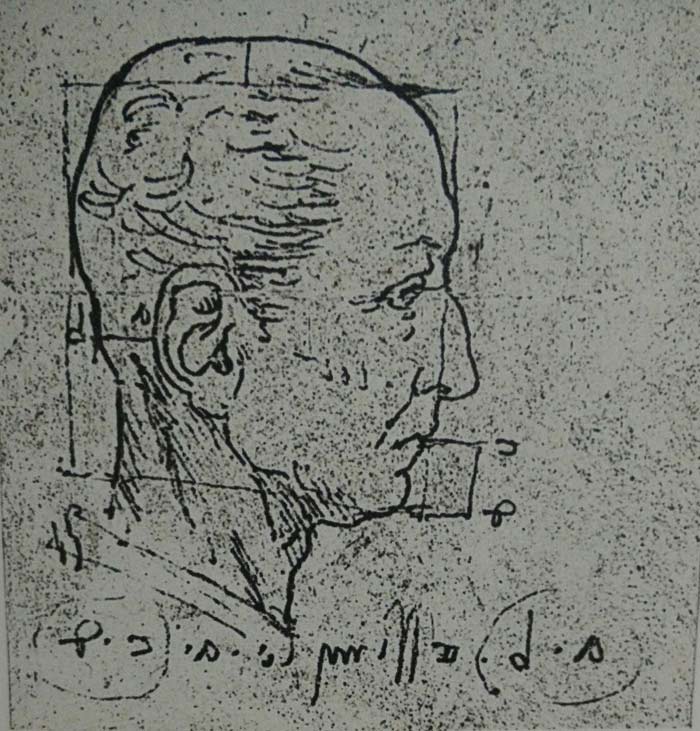
“(a b) is equal to (c d).”

“From the eyebrow to the junction of the lip with the chin and the angles off the jaw where the ear joins the temple will be a perfect square. And each side by itself is half the head.”
“The hollow of the cheek bones occurs halfway between the tip of the nose and top of the jaw bone, which is the lower angle of the setting of the ear, in the frame here represented.”
“From the angle of the eye-socket to the ear is as far as the length of the ear or the third of the face.”

“From “a to b” – that is to say from the root of the hair in the front to the top of the head ought to be equal to c d that is from the bottom of the nose to the meeting of the lips in the middle of the mouth. From the inner corner of the eye m to the top of the head a if as far as from m down to the chin s.”
“S c f b ” are all at equal distances from each other.
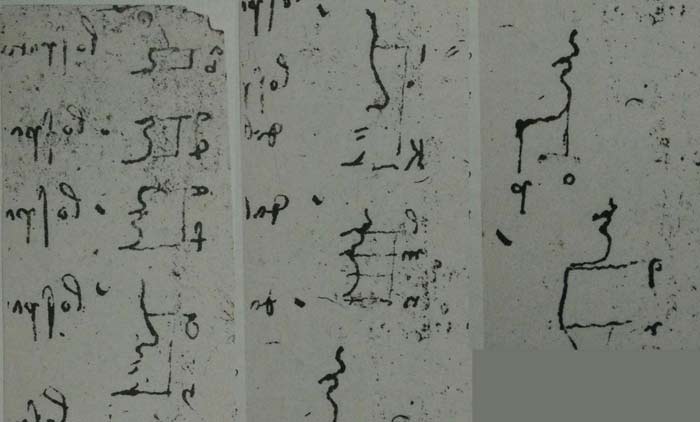
The space between the parting of the lips (the mouth) and the base of the nose is 1/7 of the face.
The space from the mouth to the bottom of the chain “c d” is the fourth part of the face and equal to the width of the mouth.
The space from the chin to the base of the nose “e f” is the third part of the face and equal to the length of the nose into the forehead.
The distance from the middle of the nose to the bottom of the page in “g h” is half the length of the face.
The distance from the top of the nose where the eyebrows begin, to the bottom of the chin, i k is two third of the face.
The space from the parting of the lips to the top of the change “i m” that is where the chin ends and passes into the lower lip of the mouth is the third of the distance from the parting of the lips to the bottom of the chin and is the 12th part of the face. From the top to the bottom of the chin “m n” is the 6th part of the face and is the 54th part of a man’s height.
From the farthest projection of the chin to the throat” o p” is equal to the space between the mouth and the bottom of the chin, and a 4th of the face.
The distance from the top of the throat to the pit of the throat below “q r” is half the length of the face and the 18th part of the man’s height.

From the chin to the back of the neck “s t” is the same distance between the mouth and the root of the hair, that is three quarters of the head.
From the chin to the job or “v x” is half the head and equal to the thickness of the neck and profile.
The thickness of the head from the brow to the nape is 1 + 3/ 4 part of the neck.
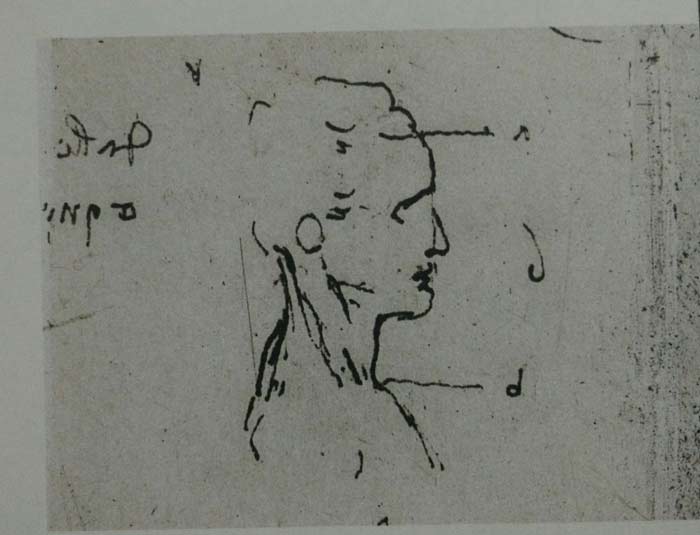
From the route of the head to the top of the breast a b is 6th part of the height of the man and this measure is equal.
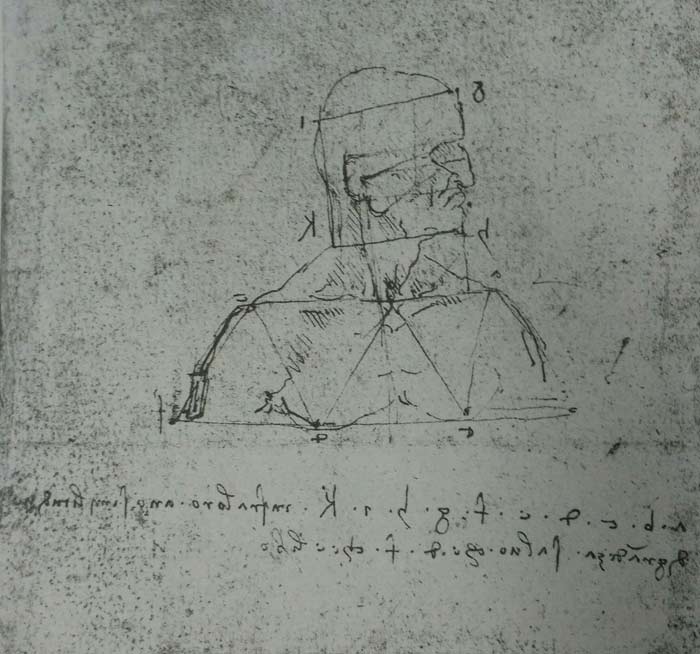
“a b, c d, e f, g h, i k” are equal to each other in size excepting that “d f” is accidental.
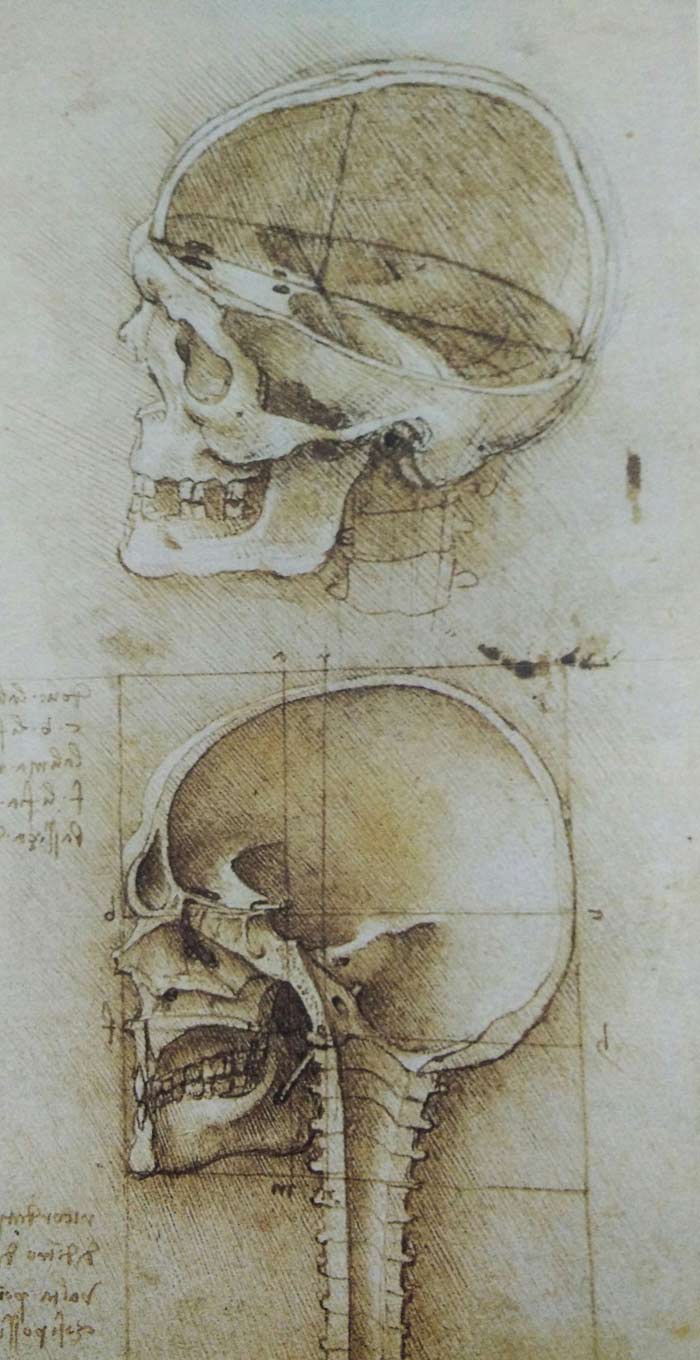
Another one of Leonardo’s most favourite subject was anatomy and he has written immense notes about anatomical measurements of human proportions, of which we found some of the skull’s.
“Where the line a m intersects the line c b this will be the meeting place of all the senses. and where the line “r n” intersects the line “h” there will be the axis of the cranium in the third of the division of the head.”
“Remember when you represent this half of head from the inside make an another which shall show the outside turned in the same direction as this, so that you may better apprehend the whole.”
Thus by closely studying Leonardo’s works and notes we can very well learn how to construct proportionally correct portraits as well as conceptualise something as simple as a self portrait.
Books:
1. Leonardo da Vinci. Complete Paintings and Drawings Johannes Nathan, Frank Zöllner.2. Leonardo da Vinci, edited by Anna Suh, 2009, Leonardo’s Notebooks. Black Dog & Leventhal Publishers, New York.
3. Payne, Robert (1978). Leonardo (1st ed.). Doubleday. p. 344. ISBN 0385041543. Retrieved 13 November 2014.
4. The Complete Paintings and Drawings by Leonardo da Vinci, Johannes Nathan, Frank Zöllner, Published August 1st 2007 by Taschen (first published August 1st 1999).
5. //www.unmuseum.org/leosketch.htm
6. Leonardo da Vinci: anatomical drawings from the Royal Library, Windsor Castle, exhibition catalog fully online as PDF from The Metropolitan Museum of Art, which contains material on Self-Portrait.
thank you this was good info.
huddlestondean
Thank u for such informative artical its a real treaure i want to save it
amra
Thanks for knowledge
William Bae
Is Ms Kulkarni’s a Student of the Drawing Academy? The article is University level material. The kind professors are expected to publish to retain tenure.
Tom Bolt
I am saving this one too! The article shows how Leonardo was learning and applying his observations of the human proportions to his drawings.
Jerusala
Learn human body anatomy and proportions quickly and easily
One-time payment - Lifetime Membership
$97 USD
